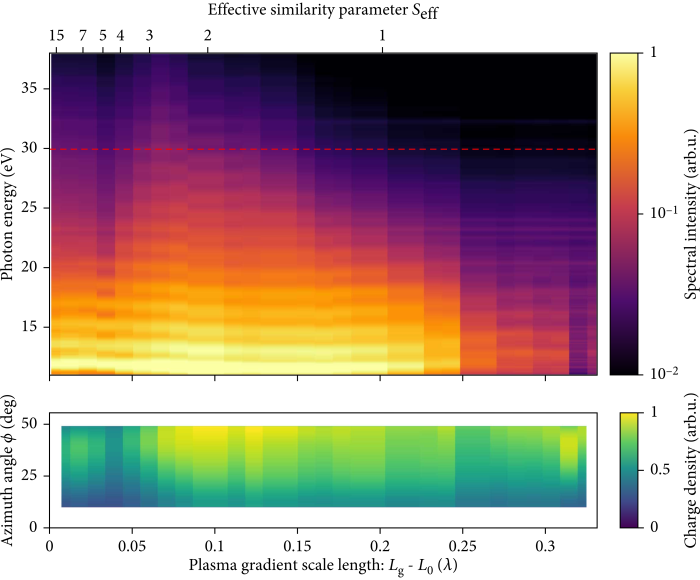High-harmonics and correlated electron emission from relativistic plasma mirrors at 1 kHz repetition rate
The PCO-group has published a collection of experimental results that provide clear evidence for the first observation of relativistic surface high-harmonic generation (SHHG) from plasma mirrors driven at kilohertz repetition rate. This extremely demanding application in terms of laser performance depends critically on the spatiotemporal pulse quality and the temporal contrast and had before only been demonstrated in single-shot measurements made with much bigger lasers, operating at ≤ 10 Hz repetition rate.
When varying in a controlled way the nanometer-range density gradient on the plasma mirror surface, this emission is found to be correlated to that of energetic electrons. For the first time, this has been studied in detail for three increasingly short and intense driving pulses, and it was found that the relativistic laser-plasma interaction is each time optimized for the same density gradients. This universality could be explained by deriving how the laser pushes plasma electrons deeper into the gradient, so that a more intense laser effectively interacts with a denser plasma. This scaling turns out to happen in just the right way so that the optimal conditions always occur for the same density gradient scale length.
These results bring us a big step closer to useful sources of powerful attosecond light pulses from ultra-intense laser-driven plasma mirrors.



